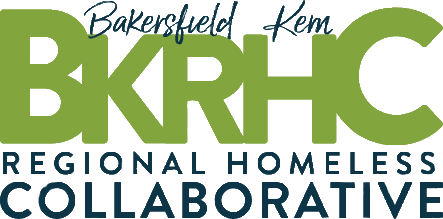By Carlos Baldovinos
A version of this op-ed appeared in The Bakersfield Californian. To view the op-ed online, visit here.
Homelessness is a complex issue that affects every one of us. Ideally, none of us want to see people living on the streets. We want safe and clean public spaces. And, we want to see our neighbors achieve their full potential.
When we encounter a person experiencing homelessness, we see a reflection of our own humanity and know, intrinsically, we were made for more.
Sadly, amidst the surge in our homeless population, it’s tempting to lose sight of those experiencing homelessness as individual people and instead view them as an abstract statistic: a public nuisance little different than graffiti or roadside litter.
Once you forget the humanity of those experiencing homelessness, it’s easier to make fallacious arguments and parrot tabloid criticism than to thoughtfully engage with plans and efforts intended to help us beat homelessness.
As executive director of the Mission at Kern County, I know firsthand what it’s like to help someone escape the instability of homelessness. And, as a longtime member of the Bakersfield-Kern Regional Homeless Collaborative, I’ve worked tirelessly alongside dedicated community leaders to beat homelessness in our community. I know how rewarding — and frustrating — the work can be.
Homelessness is a state of crisis. Few are more aware of this than those living through the experience. But too often critics portray all people experiencing homelessness as deranged addicts, vagrants and criminals who pose a constant, immediate and high risk to public safety.
Recently, an op-ed in The Bakersfield Californian did just that, reciting worn out cliches and generalizations about programs that provide temporary housing for the homeless in motels (“COMMUNITY VOICES: Hotels alone are not the answer to homeless crisis; one local organization is doing it right,” Aug. 18). The author then contrasted the alleged failure of these programs with the successful outreach and engagement conducted locally by Flood Ministries.
Our community will not successfully reduce homelessness if we continue with this type of “either/or” thinking.
We must embrace a comprehensive “all of the above” approach to addressing homelessness that combines outreach and engagement, wraparound supportive services, housing and prevention. When all four of these strategies are coordinated and work together, we see positive results: fewer people experiencing homelessness, homelessness that lasts for shorter periods of time and more of our formerly homeless neighbors who maintain long-term stability.
By definition, people experience homelessness when they don’t have a permanent place to call home. Any effort to reduce homelessness must, by definition, help individuals find and maintain permanent housing.
For many, including people we’ve helped at the Mission, a “free” motel stay is an important step toward achieving stability and maintaining permanent housing.
Likewise, we can’t equate stability with self-sufficiency.
If self-sufficiency is your objective for every person experiencing homelessness, then brace yourself for terrible disappointment. Many, if not a majority, of our unsheltered homeless population are mentally, physically or otherwise incapable of achieving self-sufficiency. In these cases, we must be able to offer permanent supportive housing to help these individuals achieve stability and achieve their full, if limited, potential.
For those interested in working together to address homelessness in our community, I have three recommendations:
First, remember that people experiencing homelessness are people first. They are someone’s child. A friend. Resist the temptation to dehumanize.
Second, support organizations that are engaged in the work of addressing homelessness in our community, like the Mission at Kern County. Don’t give money to panhandlers.
Lastly, get involved. In addition to volunteering with the Mission, the Bakersfield-Kern Regional Homeless Collaborative is responsible for planning and coordinating community action to reduce homelessness, such as the annual Point in Time Count. The more volunteers involved in our efforts, the more effectively we are able to address homelessness in our community.
At the end of the day, there isn’t any simple solution to homelessness in our community, but our situation isn’t hopeless. Together, we can build a future where every person in Kern County has a place to call home.
Carlos Baldovinos has been the executive director at the Mission at Kern County since 2010.
